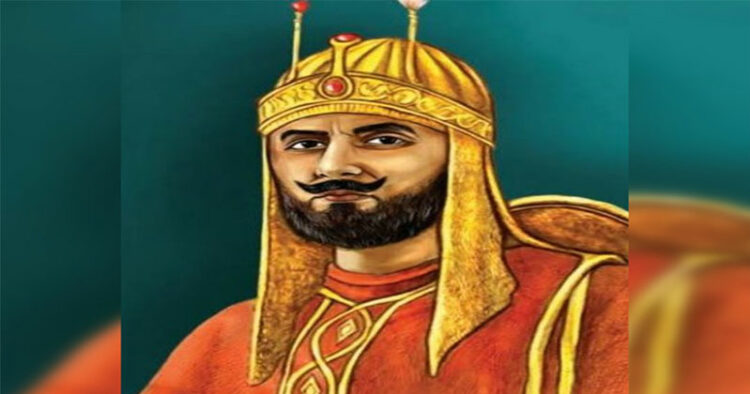One of the foundations of secular Marxist history writing is the glorification of certain Muslim rulers of India. The glorification happens in many ways.
Sometimes, they are praised for their conquests, public works and charity and sometimes for their justice and fair treatment of Hindus. This is not limited to academic matters. The foot soldiers of Marxism and Pro-Islamism perpetuate myths of their greatness on social media. To reclaim our rightful place as Indians in the world and as Hindus in the mainstream discourse, it is important that such claims be examined closely and, if found false, be discarded. Sher Shah Suri is a glorified Afghan King of India.
Almost all of us hear his stories: how he was valiant in war and prudent in the policy. His major achievements are thus described- Sher Shah Suri is remembered for his revenue and military reforms, which were similar to Khilji. His reforms were refined and continued by Akbar and became the basis of the administration of the British Raj. But it is also true that this pushed the common Indians into poverty, which continues to this day. Those calling these steps reforms should rename it as Tax Terrorism. If today the Government imposes a 50 per cent tax on the income plus some extra taxes, would it be called a reform?
Sher Shah is remembered as introducing Mohur, Rupaya and Paisa coins. His introduction of trimetallism (three metals) was an innovation and stabilised the currency. But if you see that reality, India already had coins of Gold, silver and copper (apart from base metals) since antiquity. Even the ‘Rupaya’ word is not new. It was used before him and stems from the Sanskrit’ Rupya’, meaning silver. So I wonder what new thing he did in this department. Did it lead to growth in the economy? Evidence does not prove that.
Sher Shah Suri is named the builder of Grand Trunk Road, the east-west road which connects Bengal to Punjab. So much is famous for this supposed achievement that it is called Sher Shah Suri Marg even today. But the reality is that Grand Trunk Road has been in use for thousands of years. It has been known as Uttarapatha to ancient Indians. It is mentioned in Mahabharata and Buddhist texts. It is reported to have been repaired by Chandragupta Maurya and Ashoka. Harshvardhana has been called Lord of Uttarapatha. It has been one of the most important routes for trade and commerce in the history of India. It connected to the silk route. Of course, multiple Indian Kings made repairs to it in succeeding centuries. But Sher Shah Suri has been called the builder of GT Road! What a travesty of history!
Sher Shah is known for his valour. This brave king died fighting for his kingdom at the gates of Kalinjer Fort. He was benevolent and did not discriminate based on religion. He built the Purana Qila in Delhi and named it Shergarh. The area around Purana Qila has been inhabited for thousands of years. It was called Indraprastha during Mahabharata. BB Lal excavated and found evidence of settlement going back at least 2500 years.
The Marxist historian also said that the ‘Great Muslim ruler’ was an avatar of Dharma: Kind, brave, and a great builder. The reality is far more complex, painful and disappointing for fans of Shershah. The historical facts are:- Let us examine his bravery and benevolence. In 1543, Sher Shah invaded the kingdom of the Hindu king, Puran Mal, and put his Raisin fort under siege.
In 1545, Suri led a campaign of religious violence across various provinces of the empire, both in the east and west of India. Much like in the era of the Sultanate, Suri’s advisors counselled in favour of religious violence, with Shaikh Nizam once saying: There is nothing equal to a religious war against the infidels. If you be slain, you become a martyr; if you live, you become a ghazi.
Sher Shah’s army also attacked the Hindu fort of Kalinjar, captured it and killed almost all Hindus inside the fort. Sher Shah Suri is accused by ʽAbd al-Qadir Badayuni and other Muslim historians of destroying old cities while founding new ones on their ruins after his name. Shergarh is one of the prime examples, representing a deserted town with a fort in ruins, which, in old times, used to be a thriving place where Hinduism, Buddhism and Jainism co-existed peacefully.
This can be derived from the various inscriptions found in the area. Sher Shah is also said to have destroyed Dinpanah, which Humayun was constructing as the “sixth city of Delhi”. The new city, Shergarh, built by him, was itself destroyed in 1555 after Humayun re-conquered the territory from the Surs. So much for the brave, benevolent, just and wise King Shershah! All are based on such lies.
(The writer is an assistant teacher, MNC Balika Bidyapith, Nalbari)














Comments